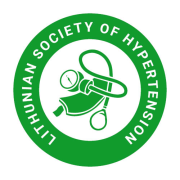

Author(s): Maximilian Seidel*, Muhammed F. Kiziler, Sebastian Bertram, Simon Wang, Felix S. Seibert, Nina Babel, Timm H. Westhoff
Background: Sleep apnea is associated with hypertension. Metaanalyses indicate that treatment of sleep apnea by continuous positive airway pressure (CPAP) reduces blood pressure (BP) by a mean of 3 mmHg. To date, predictors of BP response to CPAP remain incompletely understood. We hypothesized that the magnitude of CPAP-induced BP reduction depends on baseline apnea hypopnea index (AHI) and the extent of daytime sleepiness. Methods: We performed a retrospective study on the association of BP response to CPAP with polysomnographic readings, intensity of sleepiness (measured by Epworth Sleepiness Scale, ESS), and epidemiologic parameters in 2461 patients with obstructive sleep apnea. BP response was defined as the difference between office BP at polysomonography examinations before and after initiation of CPAP. Results: 555 patients fulfilled all in- and exclusion criteria and were included in the analysis. Median monthly CPAP usage was 143.7h (85.4-204.1h). BP was significantly higher at baseline than at follow-up (129.9±15.5 vs. 128.3±15.2, p=0.021) resulting in mean reduction of BP of -1.5±19.2 mmHg. Subjects with a higher than median baseline AHI (median 21) showed a more pronounced reduction of BP than those with lower AHI (AHI ≥21: 130.5±15.3 vs. 128.6±14.6, p=0.06; AHI <21: 129.5±15.8 vs. 127.9±15.8, p=0.18). CPAP therapy led to a significant reduction in sleepiness (8.3±4.8 vs. 6.6±4.5, p<0.0001). Those subjects with higher than median sleepiness score (ESS ≥8), however, did not show a significant difference in BP response compared to those with a lower sleepiness score. Receiver-operating characteristic (ROC) curve analyses investigating the accuracy of AHI and ESS to predict a BP reduction ≥5 mmHg revealed an AUC of 0.51 and 0.52, respectively. Conclusion: The study confirms that CPAP therapy for sleep apnea has a mild BP lowering effect. Although this effect is slightly higher in patients with above-average AHI, neither AHI nor ESS can be used to define threshold values predicting a BP decrease ≥ 5 mmHg.